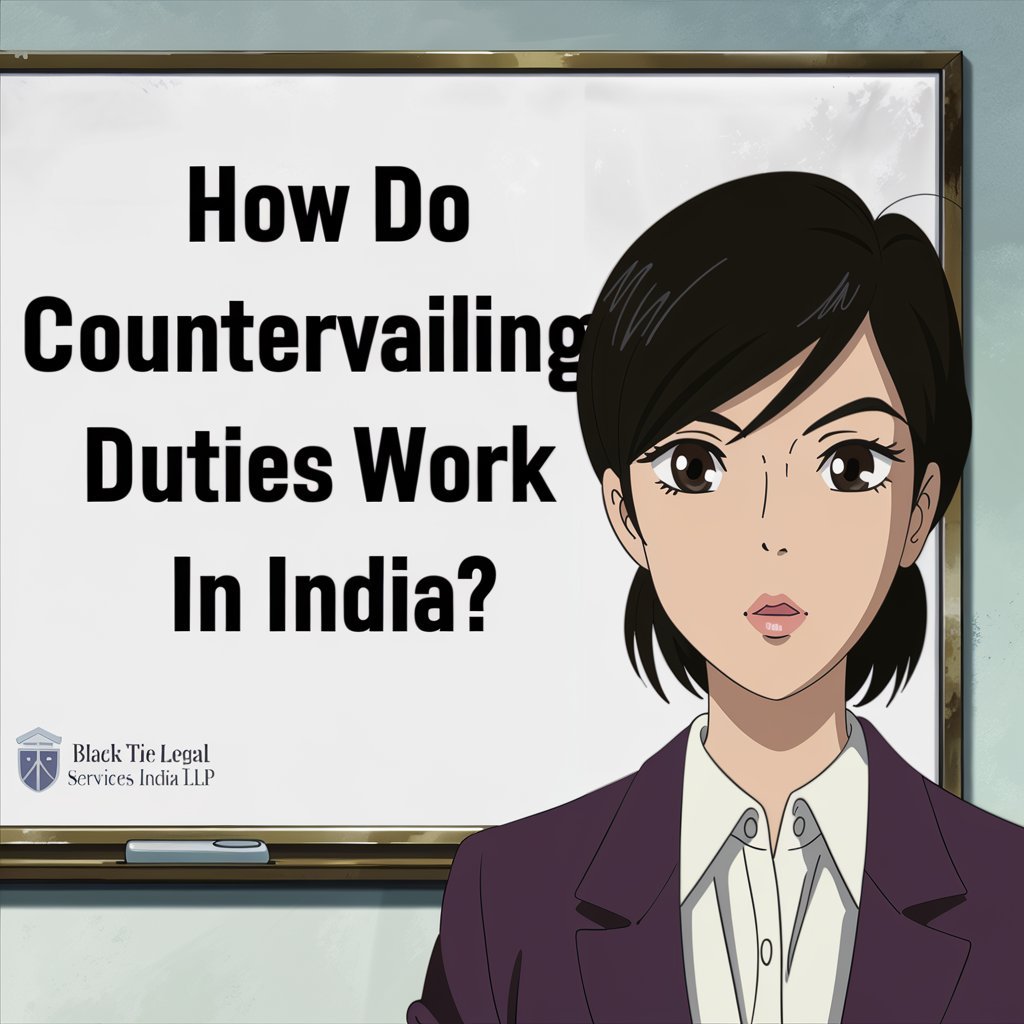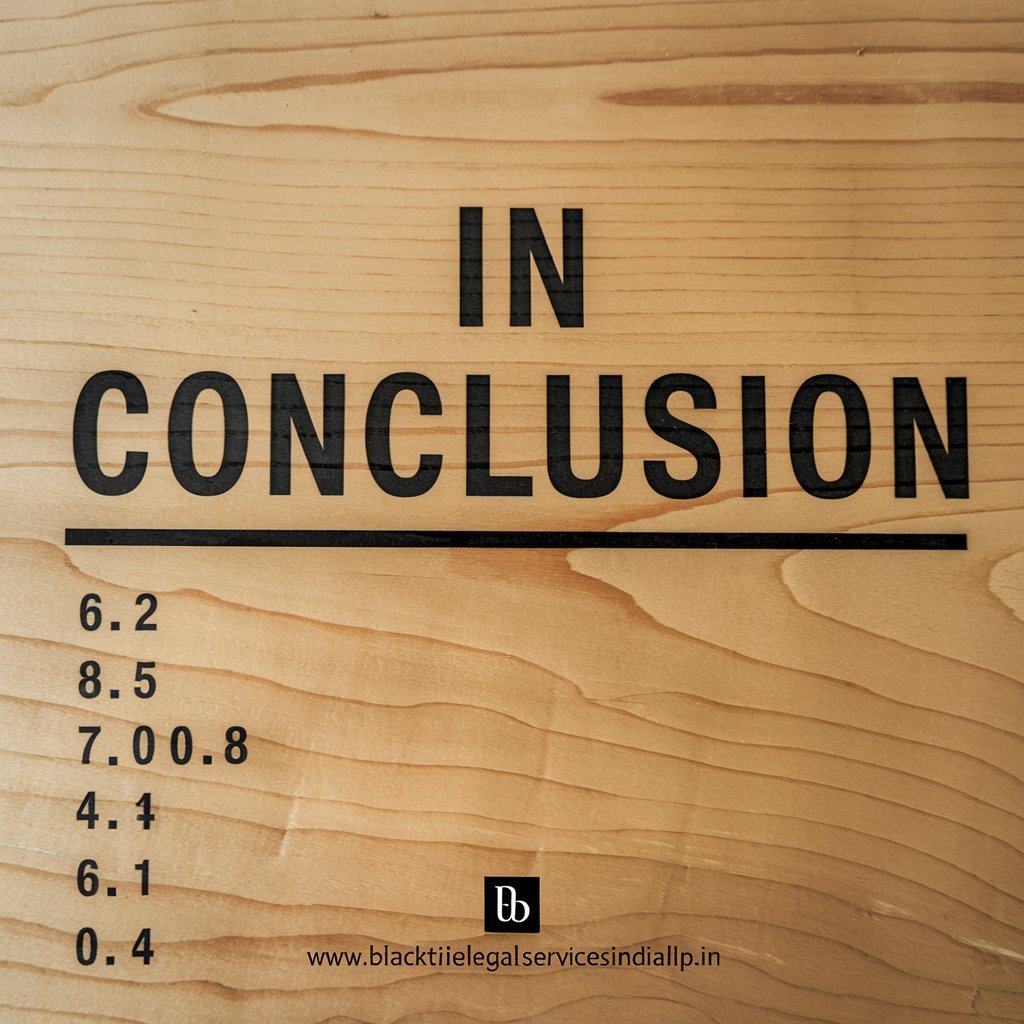One of the critical issues of the open economy in the contemporary world is to provide a fair basis for the competitive interface of indigenous industries with foreign competitors. One of the ways to implement this route is through the application of countervailing duties (CVDs).
Countervailing Duties CVDs have become more important in India as the country is interested in protecting its industries from the adverse effects of unfair trade practices, particularly those associated with subsidies provided by foreign governments.
This blog post is set to present information about countervailing duties in India, with special emphasis on the legal and factual regime of countervailing duty, its use, and its consequences for India’s economy until August 2024.
Note: We would like to inform you that this entire blog of Countervailing Duties written by us has been written after doing completely accurate research. We have not written any kind of information in it ourselves. Everything has been taken through the search engines.
- What is the Definition and Purpose of Countervailing Duties?
- What is the Legal Framework for Countervailing Duties in India?
- How Do Countervailing Duties Works in India?
- What are the International Trade Agreements and CVDs?
- What is the Procedure for Imposing Countervailing Duties in India?
- What are the Difference Between Countervailing Duty and Anti Dumping Duty?
- What happened in the Case studies: Countervailing Duties in India (2018-2024)
- What are the Challenges and Controversies in Countervailing Duties?
- Compliance with WTO Rules
- Impact on Domestic Industries
- Administrative and Procedural Issues
- What are the Recent Developments in Countervailing Duties (2023-2024)?
- Regional Trade Agreements
- What is the Impact of Countervailing Duties on the Indian Economy?
- In Conclusion
- FAQs
- Q1. How does India determine which products require countervailing duties?
- Q2. Are countervailing duties permanent?
- Q3. Can countervailing duties be challenged by exporters or foreign governments?
- Q4. How do countervailing duties affect consumers in India?
- Q5. What role do regional trade agreements play in the application of countervailing duties?
- Q6. Can small businesses in India request the imposition of countervailing duties?
- Q7. Are there any sectors in India that are particularly affected by countervailing duties?
- Q8. How do countervailing duties interact with other trade remedies like safeguards?
- Q9. What happens if the conditions that led to the imposition of countervailing duties change?
What is the Definition and Purpose of Countervailing Duties?

An excellent example of a compensatory duty is a tariff that a foreign country imposes on an imported product that has been subsidized by the government of the exporting country.
These duties are intended to balance out some of these subsidies because they cause trade disruptions and give foreign producers an edge over industries within the domestic shire.
Through countervailing duties (CVD), the importing country seeks to eliminate price undercutting on the part of the exporting country as a result of such subsidies, hence protecting its own industries from injury.
What is the Global Context of Countervailing Duties?
Internationally, compensatory trade is provided by the World Trade Organization (WTO) based on the Subsidies and Countervailing Measures (SCM) agreement.
The SCM agreement explains how subsidies can be identified, whether subsidies are specific to an undertaking or industry and whether subsidized products are harming the importing country’s domestic industry.
It also sets out the procedures that must be followed during the investigation process as well as the procedure for imposing duties.
What is the Legal Framework for Countervailing Duties in India?

The legal framework of countervailing duties in India is very vast. Hence, the entire legal structure regarding this will be presented to you all below:
The Customs Tariff Act, 1975

The legal basis for countervailing duties in India is based on the Customs Tariff Act, 1975. This means that Section 9 of the Act allows the Indian government to impose countervailing duties (CVD) on any imported product that is subsidized, if the imports cause or are likely to cause material injury to the domestic industry.
The Role of the Directorate General of Trade Remedies (DGTR)

In India, the Directorate General of Trade Remedies (DGTR) is the concerned organization that acts as the investigating authority to investigate whether countervailing duties are necessary.
After a petition is filed by the domestic industry, the DGTR investigates whether the imported goods are subsidized, whether the subsidies granted are specific to an enterprise or industry, and whether these imported goods are causing material injury to the domestic industry.
Investigation Process

The investigation process typically involves several stages, including:
- Initiation: The process begins with the filing of a petition by the domestic industry and only then the investigation process begins. The DGTR then examines the petition to determine whether there is sufficient evidence of subsidy as well as injury
- Preliminary Findings: In certain circumstances where DGTR feels there are sufficient provisions to impose Countervailing Duties, the authority may come up with a preliminary recommendation and propose provisional duty. These duties are generally fixed for a period of four months and can be extended up to six months in certain circumstances.
- Final Findings: DGTR examines all facts relating to alleged dumping, recovery of SAG doses, information provided by exporters and importers and the domestic industry. Based on the findings, DGTR may recommend that a specific countervailing duty be imposed on imports of the products from the specified country.
- Government Decision: The final decision regarding the application of Countervailing Duties is taken by the Ministry of Finance, which has the discretion to accept or reject the recommendation of the DGTR.
How Do Countervailing Duties Works in India?

We have given you complete detailed information below about how Countervailing Duties work in our country, India, this way you will know how it actually works in India:
Mechanism of CVDs

The mechanism for imposing Countervailing Duties (CVDs) in India involves several steps:
Initiation of Investigation: Start with filing a complaint with DGTR by the domestic industry or association. It also has to be shown that the imports are subsidized and causing injury to the domestic industry.
Preliminary Investigation: It is clear from the above research that DGTR first investigates the complaint to check its merits. If it finds sufficient evidence, it initiates a formal investigation.
Determination of Subsidy and Injury: The investigation focuses on two aspects:
- Subsidy Determination: Determining whether the financial contribution by a government or a public body in the exporting country to a particular industry is conferring the necessary benefit to the producers.
- Injury Determination: Evaluating the impact of these subsidized imports on a specific industry in the country, for example, through reduced sales, price cuts, or lower profits.
Public Hearings and Submissions: Exporters from other countries, domestic producers and other potential players are considered to be able to present evidence and make arguments.
Final Determination and Recommendation: After all investigations and presentations on record, DGTR takes a final decision in the application. If these findings provide evidence that the subsidy causes harm to the domestic industry, DGTR suggests the imposition of Countervailing Duties (CVD) to the Ministry of Finance.
Imposition of CVDs: As per the recommendations of the DGTR, the Ministry of Finance comes out with a notification of CVDs which may be imposed for a period not exceeding five years except in exceptional circumstances where the period is subject to review.
Calculation of Countervailing Duties

Calculation of CVD involves the identification of the subsidy margin as well as the evaluation of the overall injury margin to ensure that the duty levied is sufficient to compensate for the subsidy. The calculation generally follows these steps:
- Identifying Subsidy Amount: The amount of subsidy is determined by the amount of sales provided to exporters in the foreign country. This includes issues such as direct cash transfers, tax exemptions, sub-costs or any other method used in subsidizing the production cost.
- Determining Subsidy Margin: The subsidy margin is the ratio of the fair market value of a product without subsidy to its export price with subsidy. This margin is used in calculating CVD.
- Injury Margin Calculation: The injury margin is calculated by taking into account the degree of adverse impact suffered by the domestic industry due to subsidised imports, taking into account the lost profits, sales and market share, among other parameters.
- Final CVD Calculation: These are then used to calculate the final CVD rate which is represented by the lower of the subsidy margin and the injury margin. This helps to ensure that the CVD is not a penalty but only to balance the subsidy effect.
What are the International Trade Agreements and CVDs?

International trade agreements are legal bonds signed between two or more countries that provide rules and regulations relating to trade.
The aim of these agreements is to liberalise trade, in particular, by eliminating tariffs, quotas and trade barriers that impede trade so as to increase trade among nations which in turn promotes cooperation and economic growth.
This is the case with India, as by joining such agreements it accepts its obligations in the international context as well as in the domestic context.
A look at its current activities shows that India has several bilateral, regional and multilateral trade agreements and the most prominent among them is the WTO.
The WTO provides uniform guidelines on trade policies meant to ensure the flow of goods is as smooth as possible. Thus the rules and norms including countervailing duty (CVD) are within a framework that India and other countries are required to follow.
WTO Guidelines on Countervailing Duties

The second category of non-tariff barriers is countervailing duties (CVDs), which are imposed on imported goods to offset subsidies given to producers or exporters in an exporting country. Hence, the purpose of CVDs is to protect the domestic industry against unfair competition from such subsidized export products.
CVDs are governed by the WTO’s SCM Agreement, which has the role of controlling the use of subsidies and ensuring that they do not hinder global trade.
Essential WTO Guidelines on CVDs:
- Investigation Process: Before applying CVD, the importing country is expected to conduct an investigation to establish the effect of foreign subsidies on its domestic industry.
- However, this process must meet the requirements of the SCM Agreement, which means that it must have the right to present evidence to those parties who are interested in it.
- Provisional and Definitive Measures: If there is sufficient preliminary evidence of subsidies and damages, a provisional CVD can be imposed. Definitive CVDs can be administered after the facts have been established as explained above and their validity period is for a period of five years, which can be renewed by the regulator or the person passing the CVD.
- Notification and Consultation: Members imposing CVDs must notify the WTO and consult other members of the organization. This contributes to establishing transparency and promotes a better chance of negotiation in cases where such situations of dispute arise.
- Sunset Clause: The SCM Agreement also has an underlying agenda to eliminate CVDs that require elimination after five years, unless they are subject to a review process that reveals that their elimination will not eliminate subsidies or further subsidies and which also demonstrates that the removal of the duty will not eliminate or prevent subsidies and will not cause injury.
India’s Adherence to WTO Norms on CVDs

India being a member of the WTO is required to comply with WTO rules and regulations for any of its policies, especially CVD. India has been integrating the guidelines of the WTO SCM Agreement into its domestic trade policy regime over the past few years.
Key Aspects of India’s Adherence to WTO Norms:
- Notification and Review Mechanism: India notify WTO of CVD measures on a frequent basis and also participate in consultations in cases where there is a controversy. The country has been engaged in several disputes related to CVDs in the WTO-DSB which shows that it is willing to respect WTO norms.
- Judicial Oversight: The Customs, Excise and Service Tax Appellate Tribunal (CESTAT) and Supreme Court of India guarantees that CVD measures do not violate the Indian law and the country’s commitments under WTO.
- Compliance and Challenges: In its trading relationships India mostly complies with WTO rules set; however, it has had some problems, for instance, undertaken complaints of trading partners referring to CVDs. In such situations, India has used the WTO Dispute Settlement mechanism to go to the dispute’s defense or to bring necessary changes.
What is the Procedure for Imposing Countervailing Duties in India?

The imposition of Compensatory Duty (CVD) in India requires a systematic process that provides due justice and equity. The major steps in this process are as follows:
Steps involved in the investigation
- Petition Filing: It begins when a domestic industry files a petition with the Directorate General of Trade Remedies (DGTR). Therefore, the petition must contain factual evidence that subsidized foreign imports are injuring the domestic industry in some way.
- Preliminary Examination: When a petition is filed, it undergoes a preliminary investigation by the DGTR to decide if there is further evidence to support an investigation. This stage examines whether the case merits investigation within the prescribed parameters.
- Investigation Initiation: If the preliminary investigation is favorable, the DGTR officially begins the investigation. This includes issuing notices in the public media and seeking information from various players, including domestic producers and exporters.
- Data Collection and Analysis: According to DGTR, the data is collected from both domestic and foreign sources. This involves the use of questionnaires administered to domestic industries and foreign exporters, aimed at obtaining information related to subsidies and the effects of subsidies on the market.
- Verification: This data collected is confirmed through onsite audits and interviews with stakeholders. This also guarantees the validity of the information.
- Preliminary Findings: DGTR is the body that looks at the evidence and draws some conclusions. In this case, the authority can impose provisional CVD while continuing the investigation to protect the domestic industry.
- Final Determination: After conducting further investigation and, if necessary, taking into account the opinion of stakeholders, the DGTR takes a decision. If it is determined that the subsidy is anti-competitive, certain CVDs are imposed.
- Review and Sunset Clause: It is customary that fixed contracts contain CVDs that are usually in place for no more than five years. After that, the two parties sit down to reconsider another period of duties, looking at whether subsidies and injury events should be eliminated.
Role of stakeholders: domestic industries, foreign exporters, and the government

- Domestic Industries: The main duty of the domestic industries is to file a petition and submit relevant evidence to support their case. It is necessary for them to present facts that prove that their industry is being harmed due to abnormally subsidized imports.
- This also shows that the participation of the car owner in the investigation process is important as they provide the necessary data to prepare claims for injury and subsidy.
- Foreign Exporters: Foreign exporters will have to respond to the questionnaire and report on the subsidies paid to them. Their cooperation is also crucial to avoid bias in the investigation process, which is essential for DGTR to estimate subsidies and their effects.
- The Government: The entire matter of investigation and application of CVD is under the supervision of the Government of Pakistan through DGTR. It helps in meeting the requirements of local law and WTO norms.
- It also makes notifications to the WTO, consultations and resolves disputes. In addition, the judiciary may also be involved where there are cases of hearing or litigation regarding CVD measures.
What are the Difference Between Countervailing Duty and Anti Dumping Duty?

Here’s a table that outlines the key difference between countervailing duty and anti dumping duty which you can definitely learn about the anti dumping duty:
| Aspect | Countervailing Duty (CVD) | Anti-Dumping Duty |
|---|---|---|
| Purpose | To counteract subsidies provided by foreign governments to their exporters. | To protect domestic industries from foreign products sold below fair market value. |
| Reason for Imposition | Imposed when imports are subsidized by the government of the exporting country. | Imposed when foreign producers dump products in the domestic market at prices lower than the normal value. |
| Focus | Focuses on the unfair advantage gained through subsidies. | Focuses on the unfair pricing strategy of foreign exporters. |
| Legal Basis | Based on evidence of subsidization and resulting injury to the domestic industry. | Based on evidence of dumping (selling below cost or market value) and resulting injury to the domestic industry. |
| Duration | Typically imposed for a fixed period, often five years, but subject to review. | Also imposed for a fixed period, usually five years, and subject to review. |
| International Regulation | Governed by the World Trade Organization (WTO) Agreement on Subsidies and Countervailing Measures. | Governed by the WTO Anti-Dumping Agreement. |
| Impact on Prices | Aims to neutralize the price advantage from subsidies, leading to higher prices of the imported goods. | Aims to bring prices of dumped goods up to a fair level, preventing undercutting of domestic prices. |
| Example | Imposed on imports where the foreign government subsidizes production, reducing costs for the exporter. | Imposed on goods sold in India at a price lower than in the exporter’s home market or below production cost. |
What happened in the Case studies: Countervailing Duties in India (2018-2024)
Here’s the detailed case studies of Countervailing Duties in India (2018-2024), which we have explained in a very easy language:
Countervailing Duties on Steel Products

Out of all the Industries in India, CVDs have been especially apparent in the steel Industry. India then placed countervailing duties on certain flat products of stainless steel originating from China in 2020.
According to the findings of the DGTR, Chinese exporters had been receiving number of subsidies such as cheap credits, rewards and tax exemptions and were able to enter the Indian market at a cheaper rate for their steel products.
CVDs when imposed safeguard the Indian steel manufacturers from unfair competition and made it possible for them to compete fairly.
CVDs on Chemicals and Petrochemicals

India has also imposed countervailing duties on various chemical and petrochemical products in the same period. For example, India recently imposed CVD on specific types of soda ash imported from the United States and Turkey in the year 2022.
DGTR concluded that producers from these countries had received subsidies that allowed them to sell soda ash at a cheaper rate in the Indian market. The introduction of CVD helped develop a more stable domestic market and prevent further losses for Indian producers.
CVDs on Solar Cells and Modules

Another industry for which CVD scrutiny has been conducted is the renewable energy sector in India. India has implemented CVD which will have an impact on solar cells and modules imported from Vietnam and Thailand in 2023.
As per the assessment done by DGTR, producers from these countries have been given several subsidies like grants, tax concessions, concessional land rates, etc.
The introduction of CVD was aimed at saving the nascent local solar manufacturing industry, which is crucial for achieving India’s massive renewable energy goals.
What are the Challenges and Controversies in Countervailing Duties?

In the Countervailing Duties, the government of our country had to face challenges and controversies, which we have written in detail below:
Compliance with WTO Rules

India has been quite an active user of countervailing duties to safeguard its domestic industries; however it been a cause of concern with regards to the WTO compatibility of its duties.
Several Members have brought complaints with regards to India’s CVD measures at WTO claiming that the measures are in violation of the SCM Agreement.
For example, the United States brought a complaint to the WTO that the countervailing duties placed on some specific steel products by India were unlawful in 2021. Thus it resulted to a long-drawn legal dispute.
Continuously facing the rules of international trade while protecting its domestic industry remains a core challenge for India.
Impact on Domestic Industries

This paper examines the fact that there are certain flaws in compensatory duties that are implemented with the aim of protecting domestic industries.
For example, sectors that use imported intermediate products may have to pay more as a result of CVD, which can hurt their competitiveness.
At times, the use of CVD has downstream effects, which mainly impact downstream industries, especially SMEs, who may struggle to afford higher input costs.
Administrative and Procedural Issues

The process of imposing countervailing duties in India has also been criticised as it is lengthy and involves bureaucratic procedures. Investigations can last for months, during which time domestic industries continue to raise language about the impact of subsidized imports.
Others have also suppressed the independent investigation process on the grounds of elite self-interest and what impact such a change would have on their perceived industries.
What are the Recent Developments in Countervailing Duties (2023-2024)?

In India, we have seen many developments in countervailing duties, the details of which are given below:
Enhanced Focus on Technology and Digital Products

In 2023 and 2024 there is a significant change in Indian focus towards countervailing duties on technology and digital products. In looking at the telecommunications sector and the growth of the digital economy the Indian government has become concerned about the effect of subsidized imported electronic goods, software, and digital services.
Finally, in 2024, India launched a countervailing duty investigation on certain categories of semiconductors and electronic parts and components claimed to have been subsidized by the South Korea government and therefore enjoying trade advantage.
Strengthening Domestic Capacity

In 2023 and 2024 the India emphasis shifted significantly towards countervailing duties on technologies and digital goods. Given the dynamics of the new global economy, the Indian government saw almost imprudent risks linked with import liberalization and differentiated reduction of electronic appliances, IT, and other computer-related products, software goods, and digital services.
India in 2024 launched a CVD investigation on certain categories of semiconductor products and electronic components based on the argument that these stayed was subsidized by the South Korean government thus prejudicing trade.
Regional Trade Agreements

India’s application of countervailing duties has also been guided by RTA membership where India has been a member to some RTAs. In the new-generation RTAs that India is commencing with countries of the Indo-Pacific, the focus as can be seen, has shifted to subsidy and countervailing measures.
These provisions are designed to help India to be able to deal with the unfair trade practices while at the same time enter for new markets.
What is the Impact of Countervailing Duties on the Indian Economy?

With the advent of Countervailing Duty, many types of impacts have been seen in our country, India, out of which we have explained some of the main effects in detail below:
Protection of Domestic Industries

Another benefit of compensatory duties is the protection of domestic industries that are threatened by ‘export-harming’ subsidies. Therefore, CVDs offset the price impact caused by borrowings from foreign subsidiaries and provide a level playing field in the market for domestic producers.
This is particularly true for industries whose operations are facing stiff competition from global market rivals such as the steel, chemical and electronics industries.
Promotion of Fair Trade

It is also worth mentioning that compensatory duties also have an important role which is to ensure fair trade. Thus, CVDs contribute to establishing trade on genuine competitive advantages rather than on those arising from the distortive effects of foreign subsidies. This enhances the objectives of the WTO and the global trading system as explained earlier in this paper.
Encouragement of Domestic Investment

Imposing compensatory duties can also help boost domestic investment as it presents a more promising picture for Indian producers.
If domestic industries are protected from unfair competition, industries will expand capacity, innovation as well as technology. This also has an impact on other parts of the economy such as creation of employment for people and export of goods.
In Conclusion

Compensatory duties will continue to be an effective measure to protect domestic industries from social cost effects arising from discriminatory trade practices until August 2024.
Through the DGTR and the Ministry of Finance, the Government of India has consistently tried to counter the effects of cutthroat competition from subsidised imports in the steel and chemicals, electronics goods or renewable energy sectors through the use of CVD.
However, what we have said above does not mean that the imposition of compensatory duties is without hurdles. India has to enter new territory in the WTO; complaints from downstream sectors need to be dealt with; furthermore, the process of imposing CVD should be hassle-free and smooth.
However, it should be important that CVD is implemented within sustainable development policies to improve the future competitiveness of industries in India.
FAQs
Q1. How does India determine which products require countervailing duties?
A1. India uses investigations that consider the question of whether imports are being subsidised by the exporting country and whether or not the continued importation of such goods is causing, or threatening to cause, material injury to the domestic industry to decide on the application of countervailing duties. These investigations are normally conducted after the domestic industry has filed a petition as provided for by Worlc Trade Trade Organization rules.
Q2. Are countervailing duties permanent?
A2. In contrast, compensatory duties are not permanent measures. They are usually created for a specific period which is five years and can be reconsidered after that. The duties can be extended in case of an emerging threat or injury; however, they can also be withdrawn if circumstances do not permit it.
Q3. Can countervailing duties be challenged by exporters or foreign governments?
A3. Yes, exporters or foreign governments can try to change the fact that countervailing duties have been imposed through negotiations or they can complain to the WTO. So the WTO has a dispute settlement mechanism to deal with such challenges.
Q4. How do countervailing duties affect consumers in India?
A4. The effect of countervailing duties is that it increases the price of imported goods, as the duty is passed on to consumers. However, the duties also protect domestic industries, which are able to retain or create jobs and contribute to the economy.
Q5. What role do regional trade agreements play in the application of countervailing duties?
A5. Subsidies and compensatory measures are some of the common items that are usually included in regional trade agreements (RTAs). Through the provisions mentioned, the application of compensatory duties can be affected between the signatories and thus the duties can be waived or changed.
Q6. Can small businesses in India request the imposition of countervailing duties?
A6. Yes, small businesses, like larger industries, can petition for the imposition of countervailing duties if they believe that subsidized imports are harming their operations. They would typically need to provide evidence of the subsidies and the injury caused to their business.
Q7. Are there any sectors in India that are particularly affected by countervailing duties?
A7. While various sectors can be affected, industries that are heavily reliant on imported inputs may feel the impact of countervailing duties more acutely. The specific sectors affected can vary depending on the duties imposed and the nature of the subsidies involved.
Q8. How do countervailing duties interact with other trade remedies like safeguards?
A8. Countervailing duties are one of several trade remedies available to India. While countervailing duties address the issue of subsidies, safeguards are temporary measures imposed to protect domestic industries from sudden surges in imports. The two remedies can be used concurrently or separately, depending on the situation.
Q9. What happens if the conditions that led to the imposition of countervailing duties change?
A9. If the conditions change, such as the elimination of subsidies by the exporting country or a significant recovery of the domestic industry, the countervailing duties may be reviewed and potentially reduced or removed. This ensures that the duties remain relevant and fair over time.


Add a Comment